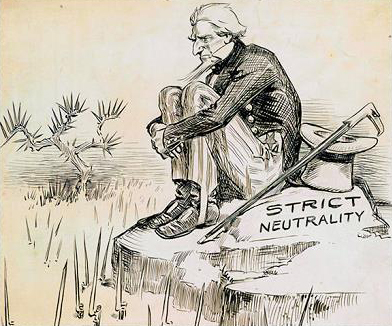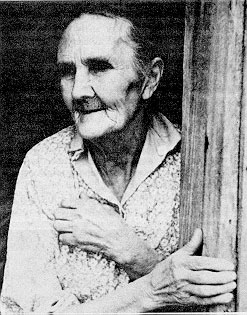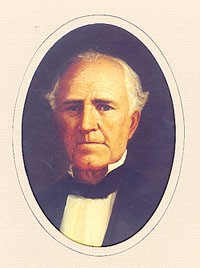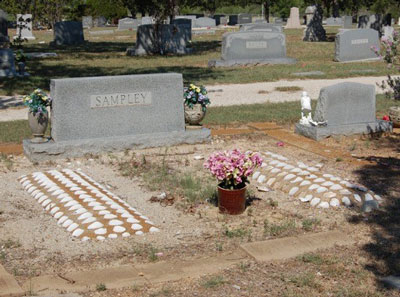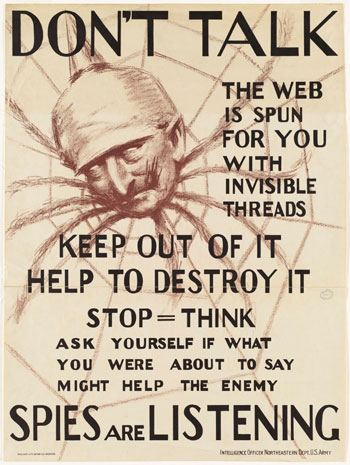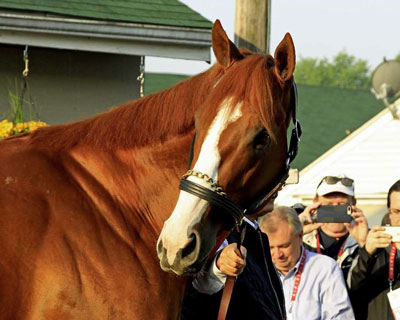
This fanciful structure is one of the many rose arbors at the Antique Rose Emporium in Independence, Texas, a must-stop on any Central Texas road trip. (photo by the author)
Last weekend a friend and I took what we considered an ultimate road trip. I had a speaking engagement in Hallettsville, almost to Victoria, so I asked her to go with me. We managed to go all the way from Greenville in North Texas to Hallettsville with only a few miles on an interstate highway and not even getting close to a city. And it was great!
We started out on our planned route, but thirty miles down the way we decided it was time for peach ice cream at Hamm’s Orchard near Terrell. It was well worth the detour but from then on we were virtually flying by the seat of out pants.
Next we ended up in Jewett when my friend remembered there was one of those wonderful small town cafes that served super blue-plate specials, as my husband calls them. You know the ones, where every one in town congregates for lunch. This one was down the road in Hearne. Great food but now we had to revise our route, again. Sure enough, we found ourselves on Highway 77 heading to our destination.
As we went through Schulenburg we found an amazing nursery. She made a U-turn and we pulled in just as the owner was closing. Such an array of plants begged to go home with us. We marked that as a must stop the next day. Schulenburg is a delightful old town with wonderful late 19th century architecture and huge live oaks.
But we forced ourselves on to LaGrange, another incredible old Texas town. Both Schulenburg and La Grange are old Texas towns dating back to the Spanish regime. The Colorado River dramatically flows through LaGrange and caused severe damage along the river as a result of Hurricane Harvey’s visit. La Grange is also complimented with grand old homes. As you drive south toward Hallettsville, you encounter a winding road up the south bank of the Colorado River. The views are fantastic.
The rest of the way was through farms and ranches tidily kept. Hallettsville popped up soon, a typical small Texas town. The library is right across the street from the kolaches bakery. I spoke at the library and found it inviting, the audience interested, and delicious German and Czech pastries to give me strength to continue in the second half of my presentation. My cousin who lives in Rock Port joined us and we all headed back to that fabulous nursery we found on the way down.
After a great meal we went looking for plants. I bought Mules Ear and Chain Vine, neither of which I was familiar with. When we left for Round Top my cousin was still buying plants. I think she made it home.
We found our way to Round Top, then to Burton for a tour of the Cotton Gin Museum, to Winedale where the late Ima Hogg recreated a village of historic homes ca. 1860s. Somewhere along the way we saw a sign for a tasting room at a Meadery. Of course we stopped to sample cider, meade and wines. Meade, if you recall your Chaucer, was a stout drink of England in the Middle Ages. It was back to Round Top for a delightful dinner before heading to Brenham for the night.
Sunday dawned cloudy with a chance of rain, but adventurers can’t let the weather slow them down. We first visited Somerville where my friend’s father lived as a child. She was afraid I would be disappointed but it was a preservationist’s dream. Founded around 1900, it was the final stop on the Santa Fe railroad. Railroad crossties were made there; it was a company town with abundant foursquare homes inhabited by blue-collar workers. During the Great Depression, the town received WPA assistance to construct a school and football stadium. Local men did the work that included quarrying the stone to build the structures. And, believe it or not, they are so proud of their work they are still using both.
Next was probably the major destination of the road trip, the Antique Rose Emporium in Independence that also was the first site of Baylor University. The plants awed us; I bought a Swamp Rose and other plants. The Swamp Rose is now planted on the side of my pond behind our house.
As we started home from lots of great food, visiting, viewing special sites and landscapes, and just a wonderful road trip, we ran into rain. On back roads we travelled parallel to I-45, with few cars, beautiful greenery. Finally we made it home, with a Tahoe full of plants and great memories.
We’re planning another trip to Schulenburg next fall. We weren’t able to fit the Painted Churches there onto our agenda for this trip. Besides, fall is a better time to plant perennials.
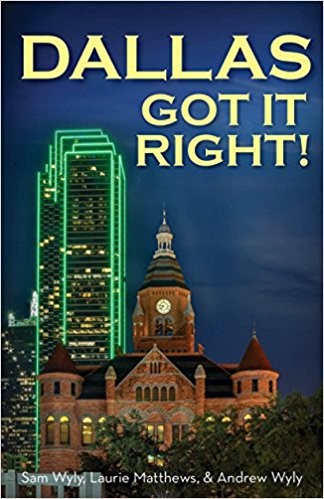 The Wyly family has just released a very clever and enjoyable book Dallas Got It Right! What makes this so fascinating is the inclusion of places throughout North Texas, in Louisiana where the family originally resided, and even as far as the Rocky Mountains that contribute to the vibrant, energetic city.
The Wyly family has just released a very clever and enjoyable book Dallas Got It Right! What makes this so fascinating is the inclusion of places throughout North Texas, in Louisiana where the family originally resided, and even as far as the Rocky Mountains that contribute to the vibrant, energetic city.
